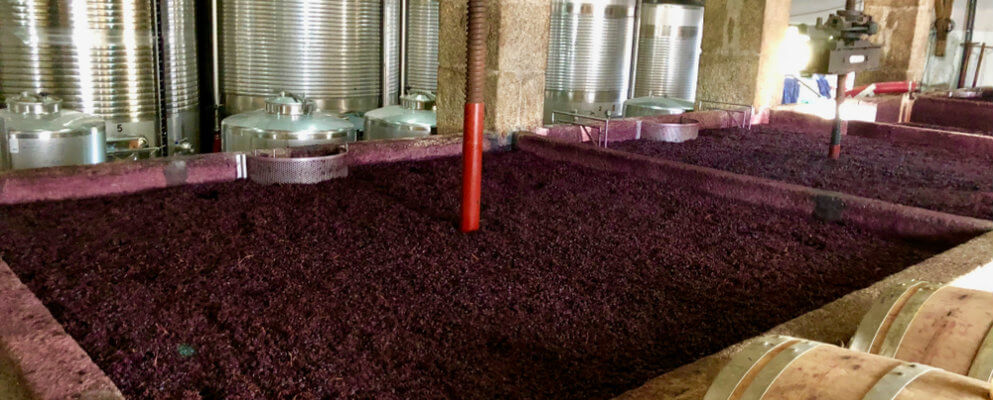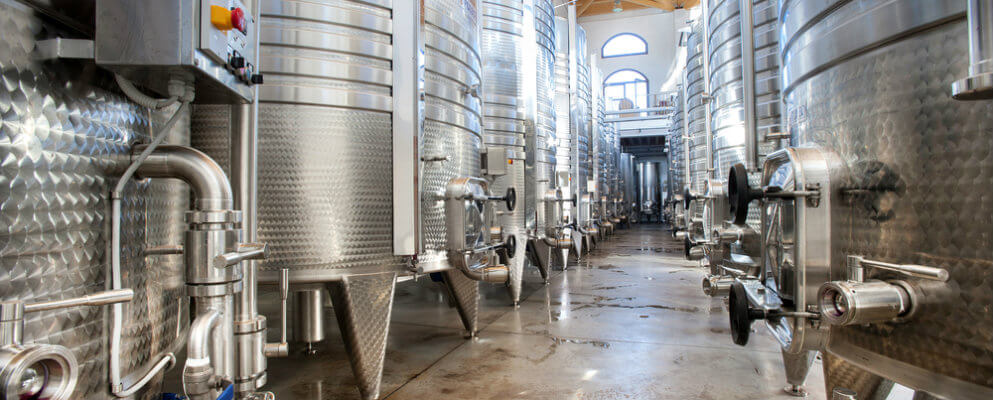
What is the Best Wine Fermentation Temperature (and How to Control it)

The process of making wine is deeply influenced by several factors, including grape fermentation, yeast strain, and fermentation temperature. Among these, temperature control methods are essential for achieving a well-balanced and high-quality finished wine.
Attempting to ferment wine in extreme conditions (either too cold or too hot) can negatively impact the entire fermentation process, resulting in poor flavor development and an unbalanced profile. Understanding the best temperature for fermentation based on the type of wine being produced ensures that complex flavors, aroma retention, and structural integrity are preserved.
What is the Best Temperature to Ferment Wine?
Finding the best temperature for wine making is not a one-size-fits-all approach. Different wines require different conditions for fermentation, which is why winemakers must carefully monitor and regulate temperatures throughout the process.
As a general rule, red wines ferment at higher temperatures for shorter periods, while white wines ferment at lower temperatures over extended periods. The temperature range significantly affects chemical reactions, such as how yeast interacts with sugars to produce alcohol and carbon dioxide, as well as the retention of volatile aromatics that contribute to the wine’s final taste and bouquet.
Red Wine Fermentation Temperature
For most red wines, fermentation occurs between 70°F and 85°F. This range allows for optimal tannin extraction and deep color development, which are essential for achieving the bold, structured characteristics of red wine.
If temperatures rise too high (approaching 90°F) the wine may develop an undesirable cooked or boiled flavor. To avoid this, winemakers often use temperature control methods such as wine coolers or a heating device to maintain stability throughout the entire fermentation process.
White Wine Fermentation Temperature
The fermentation vessel and temperature settings for white wine are quite different from those used for red wines. White wines typically ferment at cooler temperatures, usually between 45°F and 60°F, over an extended period to preserve their volatile aromatics and delicate complex flavors.
For example, the Sauvignon Blanc fermentation temperature is one of the lowest among white wines, typically ranging between 42 °F and 50 °F. This low-temperature fermentation ensures that the wine retains its crisp, fruity notes rather than allowing the yeast to produce overpowering esters.
How Fermentation Temperature Affects the Final Product
The temperature at which fermentation occurs impacts several key characteristics of the finished wine, including:
- Residual Sugar – Cooler fermentation slows down yeast activity, which can leave behind more residual sugar, creating a slightly sweeter wine.
- Aroma Retention – Lower temperatures preserve volatile aromatics, allowing for a more fragrant and nuanced wine.
- Tannin Extraction and Color Stability – Higher temperatures in red wine fermentation enhance tannin structure and deepen color intensity.
- Balance of Chemical Reactions – Temperature influences how yeast strains interact with sugars and acids, affecting acidity levels, alcohol content, and body.
By mastering temperature control methods, winemakers can fine-tune their craft, ensuring that each bottle of wine maintains its intended character, structure, and complex flavors.

How Do Wineries Control Wine Fermentation Temperature?
Since temperature fluctuations can disrupt fermentation and impact the finished wine, winemakers use various temperature control methods to maintain stability. These methods include:
- Fermentation Vessels with Cooling Jackets – Stainless steel fermentation vessels equipped with cooling systems help regulate temperatures throughout the entire fermentation process.
- Wine Coolers and Chillers – These are used to prevent overheating and to maintain the best temperature for both red and white wines.
- Heating Devices for Cold Climates – In cooler environments, a heating device may be used to ensure the yeast remains active and continues to convert sugars at an appropriate rate.
- Careful Grape Selection and Processing – The temperature of grapes before fermentation begins also affects the process. Some winemakers cool grapes before making wine to control the initial grape fermentation temperature.
Because the process of creating a high-quality wine is extremely sensitive, the best place to ferment wine would be within a controlled environment incorporating a winery chiller unit.
A glycol chiller unit can be employed to ensure an optimally regulated fruit wine fermentation temperature.
Using a mixture of glycol and water (33% glycerol solution) confers several benefits:
- Glycol has antifreeze properties, so it can be cooled to subzero temperatures without freezing and clogging up the chiller tubing
- It can provide additional lubrication for the chiller pump
- Glycol can hold heat longer than water resulting in greater heating/cooling efficiency
How Does A Winery Chiller Work?
A glycol chiller system is a refrigeration unit that works by cooling a tank of propylene glycol which is then pumped through a circuit of tubing connected to its input and output components.
When this tubing is connected to a heat exchanger on a fermentation vessel, the chilled glycol circulating though it pulls heat away from the process and reduces the fermentation temperature.
How a Winery Chiller Regulates the Fermentation Temperature
When chilled glycol is used as a coolant, it can be very effective in reducing the temperature at which fermentation occurs. However, there is still a tendency for the heat exchange process to overcool the fermenting wine, if left unchecked. This scenario is undesirable, as very low temperatures may shut down the process entirely.
Therefore, it is essential to maintain the temperature of the fermentation vessel at a specific level, which can be done in either of two ways.
1. Use Manual Shut-off Valves
Manual regulatory valves installed in a chiller system can be periodically opened or closed, depending on changes in the fermentation temperature. A major drawback to this approach is that it requires constant monitoring to be effective. Thus, the human error factor can compromise the quality of the final products.
2. Automated Regulation
This method uses a temperature-controlled solenoid valve connected to the tubing which is attached to the heat exchanger and a temperature probe installed in the wine fermentation vessel through a thermal well.
This mechanism will open or shut off automatically in response to changes in the temperature within the fermentation process, maintaining the temperature at a pre-programmed level.
Can a Winery Chiller Also Heat?
In addition to the refrigeration unit in standard winery chillers, some variants have a heating system pre-installed.
This modification is especially useful when fermentation is done under cold weather, for example, during winter in colder climates. Ordinarily, the low ambient temperature may slow or halt the fermentation process altogether, resulting in a poor-quality wine in these scenarios.
Cold Shot Can Meet Your Winery Process Chilling Needs
For over three decades, Cold Shot Chillers has been a trusted industrial chiller manufacturer of high-reliability closed-loop chillers for various production processes. We offer a wide selection of air-cooled chillers and water-cooled chillers suited for medium to large scale winery applications. Our highly motivated and experienced staff are available to offer invaluable advice to guide you to the chilling option best suited to your industrial process.
